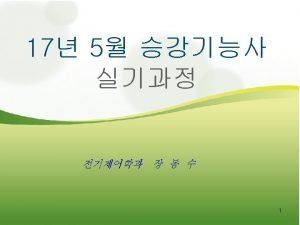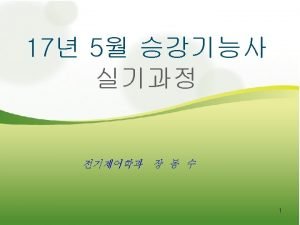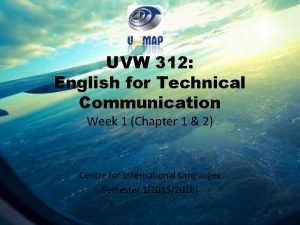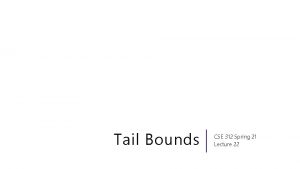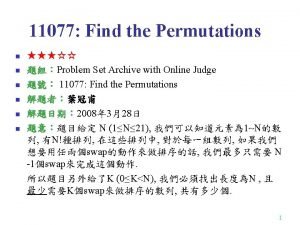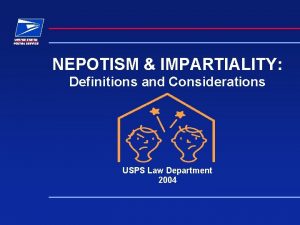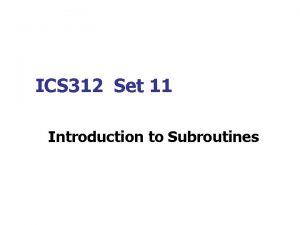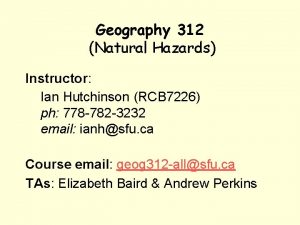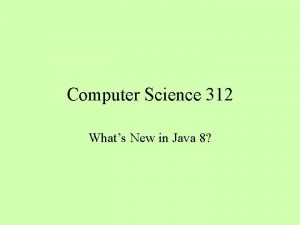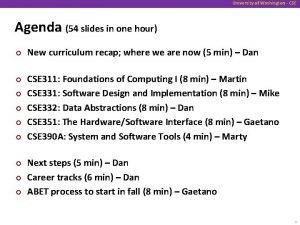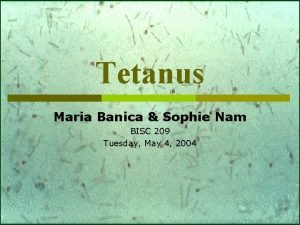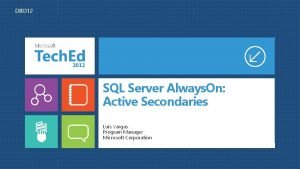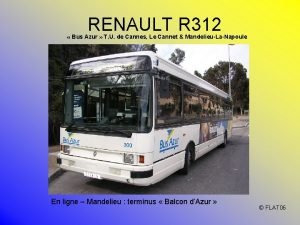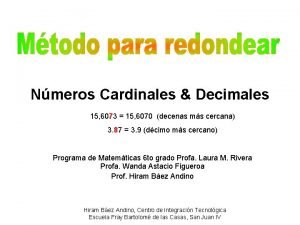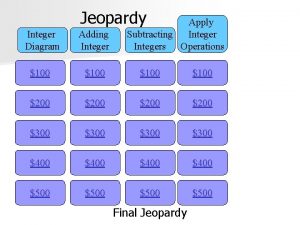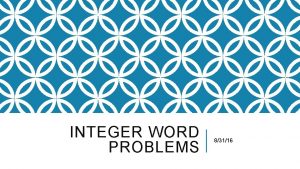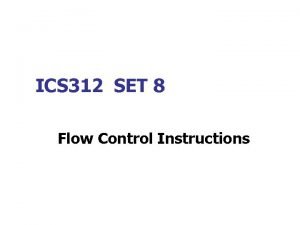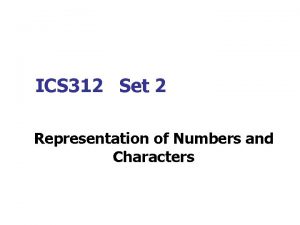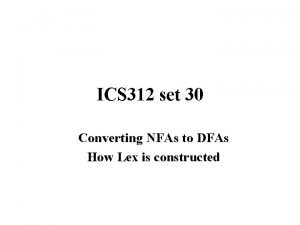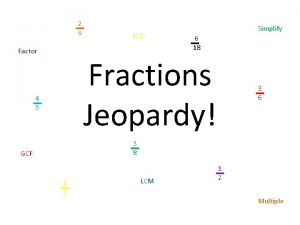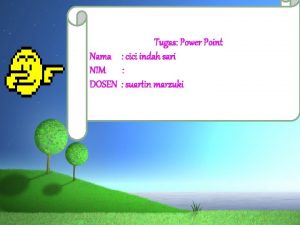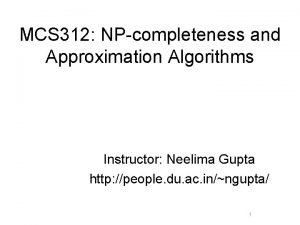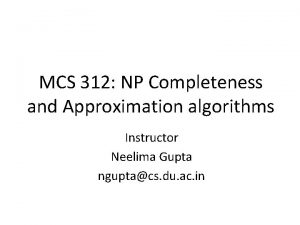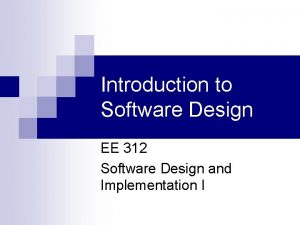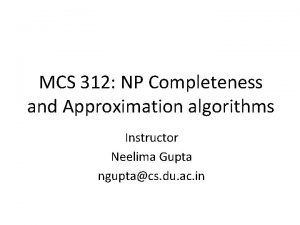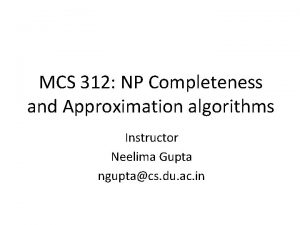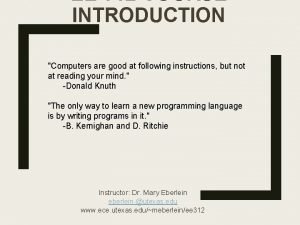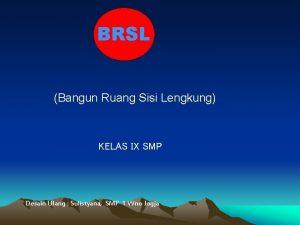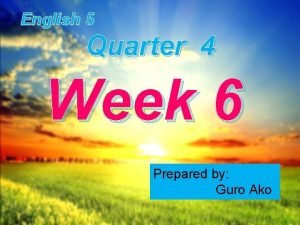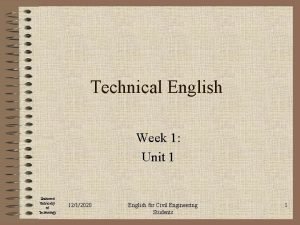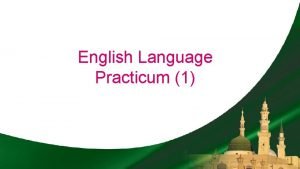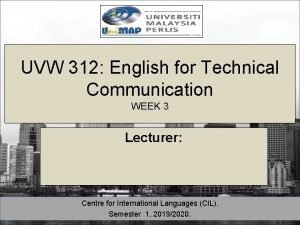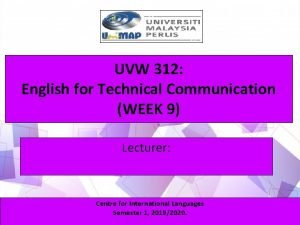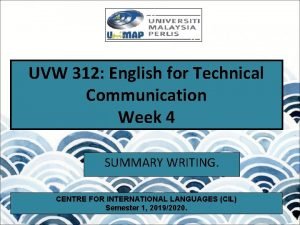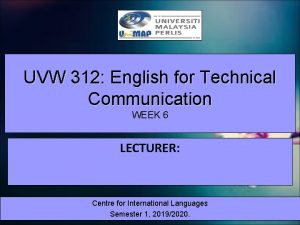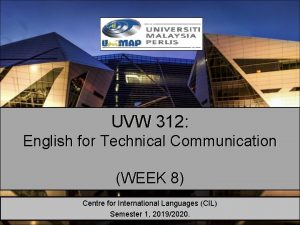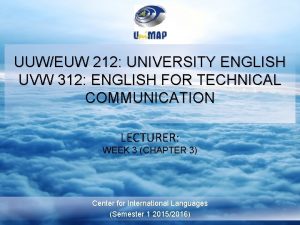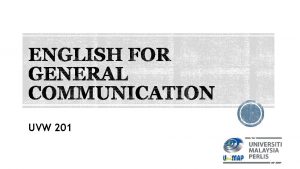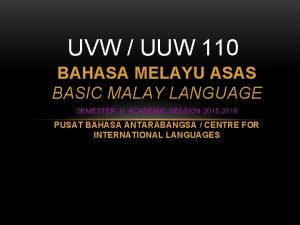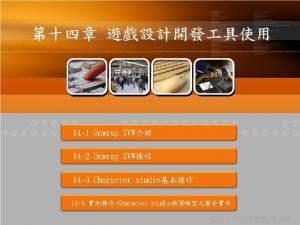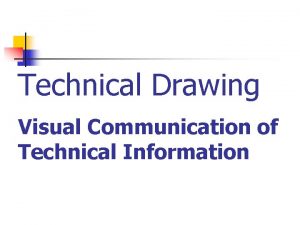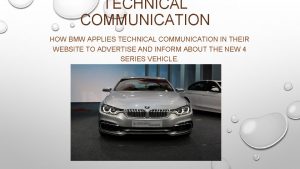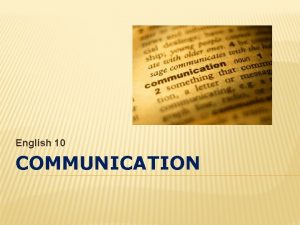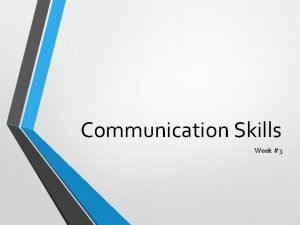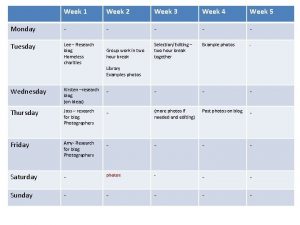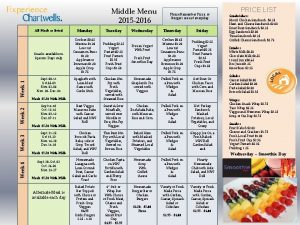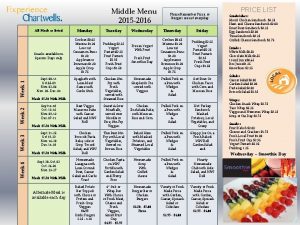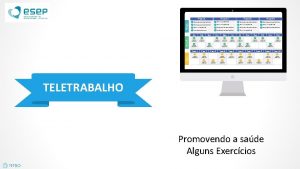UVW 312 ENGLISH FOR TECHNICAL COMMUNICATION WEEK 5

















































![Quoting • SHORT QUOTATION – According to [3], “Good pronunciation do not just mean Quoting • SHORT QUOTATION – According to [3], “Good pronunciation do not just mean](https://slidetodoc.com/presentation_image_h2/3f14287ad8cf2042e394b5b103d24c16/image-50.jpg)


![Paraphrasing e. g. : According to [7], citing is the only way to acknowledge Paraphrasing e. g. : According to [7], citing is the only way to acknowledge](https://slidetodoc.com/presentation_image_h2/3f14287ad8cf2042e394b5b103d24c16/image-53.jpg)

















![Reference List (IEEE Style) [1] B. Klaus and P. Horn, Robot Vision. Cambridge, MA: Reference List (IEEE Style) [1] B. Klaus and P. Horn, Robot Vision. Cambridge, MA:](https://slidetodoc.com/presentation_image_h2/3f14287ad8cf2042e394b5b103d24c16/image-71.jpg)











- Slides: 82

UVW 312: ENGLISH FOR TECHNICAL COMMUNICATION WEEK 5 LECTURER: Centre for International Languages Semester 1, 2019/2020.

Using APA and IEEE style In-text citation References Quoting, Paraphrasing, Summarizing and Synthesizing.

• There are different types of university assignments (e. g. essays, reports, oral presentations, blogs, Power. Point presentations and case studies. ) • When you write an assignment, you will usually be expected to include the details of any sources you have used as in-text citation and in a list at the end of the assignment called references.

• Each time you “borrow” ideas, data, information or illustration from other sources to use in your assignment, you will need to reference the source. • WHY? • Citing your sources acknowledges the origin of your information. – It lends CREDIBITILY to your work by showing the evidence of your research. – Demonstrate the AUTHENTICITY of your information. – It enables your readers to LOCATE your information sources. – Avoid PLAGIARISM and its associate penalties.

• What should I reference? – Hard copy (paper-based) sources e. g. books, journal articles, newspapers, magazines, brochures, pamphlets, etc. – Electronic sources e. g. websites, videos, blogs, file clips, audio files, notes and readings. – Other sources e. g. phone conversations, interviews. – Visuals e. g. images, figures, tables.

A citation… • A fundamental research skills. • Serves as a reference to the source of an idea, information or image. • Typically includes enough identifying information: – Author, Title, Publication, etc. • Allow readers to access the original sources if they want to use the information. • To AVOID PLAGIARISM.

What is Plagiarism? • A serious academic offense. • “taking someone else’s words or ideas as if they were your own. ” • “a piece of writing that has been copied from somebody else’s and is presented as being your own word” • Plagiarism: – Copy/ paraphrase/summarize another’s words, ideas or opinion without documenting your sources. – Download something from the internet including graphic and using it in your paper without citing the source. – Copy somebody else’s paper and handing it as your own.

What are the consequences for committing plagiarism?

WHY ACKNOWLEDGE SOURCES? • Reflect the careful and thorough work that you have put in locating and exploring your sources. • Acknowledge those authors who contributed to your work. • By citing sources, you demonstrate your integrity and skills as responsible students and researchers.

Citation Styles • APA : Psychology, Education and Sciences / Social Sciences • IEEE : Engineering • MLA : Literature, Art, Humanities • AMA : Medicine, Biological Sciences • Turabian : Designed for college students to use for their subjects. • Chicago : All subjects in the real world by books, magazines, newspaper and other nonscholarly publications.

APA Style (American Psychological Association)

APA Style • Originated in 1929. • 2 levels: – Sentence level (IN-TEXT CITATION) – Reference list

APA Citation (In-Text Citations) What does it mean by in-text citations? • Required when you use someone else’s ideas, theories or research in your paper. • In-text citation contains basic information about the source: – The source’s author(s). – The year of publication. – The page number (if available).

APA Citation (In-Text Citations) • In APA style, in-text citations are placed within sentences and paragraphs so that it is clear what information is being quoted/paraphrased and whose information is being cited. • Examples: • Works by single author • …from theory of bounded rationality (Simon, 1945)… • Simon (1945) posited that… • Works by two authors. • …as has been shown (Leiter and Maslach, 1998) • As Leither and Maslach (1998) demonstrated…

APA Citation (In-Text Citations) • Works by multiple authors. • When a work has 3 -5 authors, cite ALL authors the first time the reference occurs. • Shafiq, Srikandy, Safuraa, Nazifah and Masturah (2013) found…. • In all subsequent citation per paragraph, include only the first author followed by “et al. ” (Latin = and others) and the year of publication. • Shafiq et al. (2013) found…

APA Citation (In-Text Citations) How to do it? 1. Quoting 2. Paraphrasing 3. Summarizing 4. Synthesizing

1. Quoting • COPY & PASTE. • Take the exact words from the author and place it in your writing. • QUOTATION STYLES: – SHORT quotation – LONG quotation

a) Short Quotation • Fewer than 40 words. • Short quotations are incorporated into the text. • E. g. : Lee (2007) stated, “ The ability to think critically is needed in this revolutionary age of technological change. ” (p. 88) OR One researcher emphasized that “the ability to think critically is needed in this revolutionary age of technological change” (Lee, 2007, p. 88) • Direct quotations are usually put inside quotation marks (“……”) • All printed sources must include page number.

b) Long Quotation • 40 or more words. • E. g. : Lazar (2006) describes the delicate balance of survey design: Only relevant types of demographic information should be requested. Asking inappropriate questions ain ens roup focus survey, interview, or d. willusers are less likely to respond. (p. 52) The number of questions depends greatly on… • For longer quotations, no quotation marks are used and the quotation is indented instead.

2. Paraphrasing • When you use author’s ideas, but express them in different words, you are paraphrasing. • To paraphrase, you must change some of the words and change the sentence structure. • A paraphrased item is not enclosed in quotation marks because it is not a word-forword quotation. • It is important that the sentence structure and the vocabulary are NOT TOO SIMILAR TO THE ORIGINAL TEXT.

ORIGINAL PARAPHRASED In American society, introverts are outnumbered about three to one. As a result, they must develop extra coping skills early in life because there will be an inordinate amount of pressure on them to “shape up” to act like the rest of the world. The introvert is pressured daily, almost from the moment of awakening, to respond and to conform to the outer world. Classroom teachers unwittingly pressure introverted students by announcing that “ one third of your grade will be based on classroom participation. ” (Marion, 2001, p. 143) There are many extroverts than introverts in America. This puts a lot of pressure on introverts to fit in and be like everybody else. Even in school, teachers add to this pressure by making class participation as part of the students’ grade. Consequently, introverts have to acquire additional skills to deal with these pressure. (Marion, 2001, p. 143)

Why Paraphrasing? • Challenge students’ intellect. • Demonstrate students’ comprehension of the text. • Develop students’ vocabulary and grammar. • Simplify the work of other people by replacing them with easier vocabulary.

How to introduce quotations and paraphrased sentences? Signal words for use in in-text citations.

Say or Mean Argue Explain Other State Add Dispute Describe Agree Remark Assert Disagree Clarify Question Maintain Confirm Question Justify Offer Hold the view Find Debate Reason Predict Point out Affirm Claim Show Identify Highlight Imply Demonstrate Emphasize Contend Suggest

How to Paraphrase? 1. Rearrange / change the word order/ sentence structure. Although the weather is good, Fareez is in a bad mood even though the weather is good. 2. Change the words with its synonyms. The manager needs to find a solution for the company’s problems. The manager has to solve the company’s problems.

Take note on these following aspects: • Meaning: keep the ORIGINAL meaning. • Words: use synonyms where appropriate. DO NOT change the technical terms. • If you want to retain unique specialist phrases, use quotation marks (“ ”). • Change the grammar and sentence structure. – Break up a long sentence into 2 shorter sentences; OR combine two short sentences into one. – Change active-passive voice – Change the order of information/ ideas presented as long as they are still making sense.

Paraphrase these sentences. 1. Always carrying heavy objects threw his back out of whack. 2. The painkiller was administered to the boy since last week to relieve his pain. 3. Ross (2012) pointed out that the economic slump in Western countries has dragged down most of the Asian countries. 4. Driving again after being hit badly by the other vehicle requires Danny to have a lot of courage. 5. Due to the oppressive heat of the weather, the spectators begin to leave the stadium although the football match has not finished yet.

Paraphrase these sentences: Answer 1. He hurt his back because he frequently lifts heavy things. 2. The boy was prescribed with medicine since last week t reduce his pain. 3. According to Ross (2012), the financial crisis in the West has affected most countries in Asia. 4. Danny needs to be brave to drive again after he was involved in the terrible accident. 5. Even though the football match is not over yet, the audience started to get out of the stadium because of the extremely hot weather.

3. Summarising • A condensed form of the information , keeping the main point of the text but omitting detailed examples. • The original idea or meaning must be maintained. • Technical words remain.

APA Citation Style: Summarizing • RESTATE the main idea of the text in FEWER WORDS. • Need to identify the gist/ main idea of the whole passage.

The Titanic was a magnificent, wellengineered ship. Because it was considered unsinkable, it did not carry enough lifeboats for all the passengers. The Titanic hit an iceberg. Tragically, the ship sank before other ships could reach it because of poor radio contact. Main idea: A. Radio contact was difficult. B. Lifeboats are important. C. Icebergs are dangerous. D. The Titanic was mistakenly considered unsinkable.

When you look for word meaning, your purpose will guide you in using the best resource. If you simply need a definition, you can find that in a dictionary. If you need to know another word that means the same as your word, you could look in a thesaurus. For example, if you wanted to know another word for break, thesaurus could tell you crack, fracture or shatter. Main idea: A. A thesaurus contain synonyms. B. A dictionary is easier to use than a thesaurus. C. A synonym for break is crack. D. The type of resource guide to use is determined by your need.

Ted’s old car looks dreadful. The exterior looks dingy. The seats are torn and the windows are cracked. But the engine operates smoothly. Ted intends to repair the car so it looks as good as new. In his eyes, it looks excellent. Main idea: A. Ted needs a new car. B. Ted’s seat’s are ripped. C. Ted’s car is broken down. D. Even though it looks bad, Ted loves his car.

Steps for Summarising • Read the text carefully several times. • Check the meaning of terms that you do not understand. • Underline technical and specialised words, remembering that they should not be changed. • Reread the text and make notes of the main points, leaving out examples and evidence. • Consider the main points as a whole and your purpose for using the information in relation to the structure of your assignment. • Think of words or phrases which have similar meaning to those in the original text. • If the key words are specialised vocabulary for the subject, they do not need to be changed. • Develop an outline using short sentences written in your words. Rearrange these sentences as you see the need for your purpose. • Keep reminding your reader that you are summarising the work of someone else by using their name in the summary (citation).

4. Synthesizing • What can you derive from your readings? • Involves COMBINING IDEAS with our prior knowledge to create your original insight, perspectives and understanding by reflecting on the text. • Topic: – The effectiveness of integrating social network in improving speaking skills among Uni. MAP students.

• Ruth (2005) and Mohamed Esa (2008) suggest that by bringing in the computing technology into language classroom, it allows students to engage themselves in practicing the language in an authentic discourse. • Piaget and Vigotsky (1979) in their constructivist theory believe that learners construct their own understanding when they learn anything.

• Bailey (2005) proposes that writing a term paper is a good way to evaluate writing ability among students. Nevertheless, Murray (2008) views this type of assessment as unreliable as it is hard to know whether the students themselves wrote the essay.

Reference List (APA Style) References Emanuela, (2012) Beauty Ideals Around The World. Retrieved from www. allvoices. com/contributednews/3798150 -beauty-ideals-around-the-world Ligon, C. (2009) This Beautiful World: Standards of Beauty Around The World. Retrieved from http: //www. hercampus. com/school/tulane/beautifulworld-standards-beauty-around-world Weber, C. (2014) Geography of Beauty. Retrieved from geography. about. com/od/culturalgeography/a/Geogra phy-of-beauty. htm

APA Citation (Reference List) Books Website Journal RL Book with 2 authors Book with ‘Edition’

APA Citation (Reference List) 1) BOOKS (single author) • Author’s Name, Year, Title of Publication / Book, Place of Publication (Location: City & State), Publisher Author’s Year. name. Example: Title. Calfee, R. C. (2007). APA guide to preparing manuscripts for journal publication. Place (City, State: ) New York, United States: Publisher. Pearson Longman

APA Citation (Reference List) 2) Book with 2 Authors (or more) - Authors: Calfee, R. C. and Valencia, R. R. 1 2 A’s & name. 3 4 5 6 7 A’s name. Year. Title. Place (City, State: ) Publisher. Calfee, & Valencia, R. C. R. R. (2007). APA guide to preparing manuscripts for journal publication. New York, United States: Pearson Longman

APA Citation (Reference List) 3) Book – With ‘Edition’ 1 2 3 4 A’s name. Year. Title. Edition (ed. ) 5 6 Place Publisher. (City, State: ) Calfee, R. (2007). APA guide to (2 nd ed. ). New York, C. preparing United manuscripts for States: journal publication Pearson Longman

APA Citation (Reference List) 4) Journal 1 2 A’s name. Year. 3 Title. Wargh, J. (2003). English as a lingua franca: A threat to multilingualism. 4 5 6 Journal’s Issue and/ Page Name or Volume Journal of 7(4), 556 -578 Sociolingu istics,

APA Citation (Reference List) 5) Website 1 2 A’s (n. d. ) name. Bread, F. H. 3 Title. 4 5 6 Date of Name of Source’s Retrieval the URL (Retrieve Website d on…) (…from…) (n. d. ) Elements of a Retrieved from bussiness plan: An on July Entrepen executive 23, 2007 eur summary. http: //w ww. entre peneur. c om/starti ngbussine ss

Reference List in APA Citation • The name of authors must be arranged according to alphabetical order. (A, B, C Z)

Author’s name. Types of Names Real Name In-text Citation References Muslim names Abdul Rahim bin Abdul Malik According to Abdul Rahim (2002), …. Abdul Rahim Abdul Malik (2002). Chinese names Tan Lee Keong According to Tan (2003), …. Tan Lee Keong (2003). Indian names Santhanam Suresh According to Santhanam (2004), …. Santhanam Suresh (2004). According to Dickinson (2005), …. . Dickinson, E. (2005) Western names Emily Dickinson

IEEE Style (Institute of Electrical and Electronic Engineers)

IEEE Style • A citation rule used in the preparation of research papers, reports and journal articles, in the TECHNICAL FIELDS of electrical, electronics and computer science engineering as defined by the IEEE. • Different from APA because IEEE DOES NOT REQUIRE THE AUTHOR OR DATE OF PUBLICATION to be mentioned within the text. • Information cited within the text through the use of simple sequential number. [1], [2], [3]… • Numbers must be enclosed with square bracket [ ] to indicate specific reference.

1. Quoting • To repeat or copy the words usually with acknowledgement of the source. • Take the exact words from the author (changing them by using your own word would change the meaning) • EXACT reproduction of spoken/ written words. • QUOTATION STYLES: – SHORT quotation – LONG quotation
![Quoting SHORT QUOTATION According to 3 Good pronunciation do not just mean Quoting • SHORT QUOTATION – According to [3], “Good pronunciation do not just mean](https://slidetodoc.com/presentation_image_h2/3f14287ad8cf2042e394b5b103d24c16/image-50.jpg)
Quoting • SHORT QUOTATION – According to [3], “Good pronunciation do not just mean saying individual words or even individual sounds correctly. It is how the sounds of words change when they come into contact with each other”. • LONG QUOTATION – New restrictions on public smoking have led many smokers to cut back on how much they smoke. By doing so, they often feel that they are reducing or eliminating the health dangers from smoking, nut this study shows that this is not the case. Reducing smoking reduces the risk of lung cancer somewhat, but that risk remains high [4: 27] * [ no. of reference : page number]

Quotation • Every direct quotation should appear between quotation marks (“ ”) and exactly reproduce text, including punctuation and capital letters. • A SHORT QUOTATION often works well integrated into a sentence.

2. Paraphrasing • A restatement of a text/ passage in another form/ other words. • Involves putting a passage from source material into your own words. • The same meaning is kept, but using different words and phrasing. • PARAPHRASE may result in longer or shorter version of original text.
![Paraphrasing e g According to 7 citing is the only way to acknowledge Paraphrasing e. g. : According to [7], citing is the only way to acknowledge](https://slidetodoc.com/presentation_image_h2/3f14287ad8cf2042e394b5b103d24c16/image-53.jpg)
Paraphrasing e. g. : According to [7], citing is the only way to acknowledge the ideas of others. A clear link has been found between smoking and skin cancer among men without any other risk factor [9].

How to Paraphrase? • Read and understand the text carefully. • Identify the main point(s) and key words. • Rewrite in your own words. Check that you have included the main points and essential information. • Write the paraphrase in your own style.

Take note on these following aspects: • Meaning: keep the ORIGINAL meaning. • Words: use synonyms where appropriate. DO NOT change the technical terms. • If you want to retain unique specialist phrases, use quotation marks (“ ”). • Change the grammar and sentence structure. – Break up a long sentence into 2 shorter sentences; OR combine two short sentences into one. – Change active-passive voice – Change the order of information/ ideas presented as long as they are still making sense.

4. Synthesizing • Used when there are two or more sources (from different authors) needed to support a stand. • Use: i. To COMBINE SIMILAR IDEAS from two different authors/ more. E. g. : • Several recent studies [1, 2] concur that public examination are not reliable way of gauging the true ability of students.

ii. To show CONTRASTING IDEAS on a similar topic. e. g. : According to [4 -7] writing a term paper is a good way to evaluate writing ability among students. Nevertheless, this type of assessment as unreliable as it is hard to know whether the students themselves wrote the essay.

IEEE Citation (Print References) • Books Author(s). Book title. Location: Publishing company, year, pp. Example: W. K. Chen. Linear Networks and Systems. Belmont, CA: Wadsworth, 1993, pp. 123 -35.

IEEE Citation (Print References) • Book Chapters Author(s). “Chapter title” in Book title, edition, volume. Editors name, Ed. Publishing location: Publishing company, year, pp. Example: J. E. Bourne. “Synthetic structure of industrial plastics, ” in Plastics, 2 nd ed. , vol. 3. J. Peters, Ed. New York: Mc. Graw-Hill, 1964, pp. 15 -67.

IEEE Citation (Print References) • Article in a Journal Author(s). “Article title”. Journal title, vol. , pp, date. Example: G. Pevere. “Infrared Nation. ” The International Journal of Infrared Design, vol. 33, pp. 56 -99, Jan. 1979.

IEEE Citation (Print References) • Articles from Conference Proceedings (published) Author(s). “Article title. ” Conference proceedings, year, pp. Example: D. B. Payne and H. G. Gunhold. “Digital sundials and broadband technology, ” in Proc. IOOCECOC, 1986, pp. 557 -998.

IEEE Citation (Print References) • Papers Presented at Conferences (unpublished) Author(s). “Paper’s title, ” Conference name, Location, year. Example: B. Brandli and M. Dick. “Engineering names and concepts, ” presented at the 2 nd Int. Conf. Engineering Education, Frankfurt, Germany, 1999.

IEEE Citation (Electronic References) • Books Author. (year, Month day). Book title. (edition). [Type of medium]. Vol. (issue). Available: site/path/file [date accessed]. Example: S. Calmer. (1999, June 1). Engineering and Art. (2 nd edition). [On-line]. 27(3). Available: www. enggart. com/examples/students. html [May 21, 2003].

IEEE Citation (Electronic References) • Journal Author. (year, month). “Article title. ” Journal title. [Type of medium]. Vol. (issue), pages. Available: site/path/file [date accessed]. Example: A. Paul. (1987, Oct. ). “Electrical properties of flying machines. ” Flying Machines. [Online]. 38(1), pp. 778998. Available: www. flyingmachjourn/properties/fly. edu [Dec. 1, 2003].

IEEE Citation (Electronic References) • World Wide Web Author(s). “Title. ” Internet: complete URL, date updated* [date accessed]. Example: M. Duncan. “Engineering Concepts on Ice. Internet: www. iceengg. edu/staff. html, Oct. 25, 2000 [Nov. 29, 2003].

IEEE Citation (Odd Sources) • Newspaper Author(s). “Article title. ” Newspaper (month, year), section, pages. Examples: B. Bart. “Going Faster. ” Globe and Mail (Oct. 14, 2002), sec. A p. 1. “Telehealth in Alberta. ” Toronto Star (Nov. 12, 2003), sec. G pp. 1 -3.

IEEE Citation (Odd Sources) • Dissertations and Theses Author. “Title. ” Degree level, school, location, year. Example: S. Mack. “Desperate Optimism. ” M. A. thesis, University of Calgary, Canada, 2000.

Reference List in IEEE Citation • The names of authors are arranged according to the order they appear in the in-text citation. [1, 2, 3…] • Do not follow alphabetical order. • Authors’ names: – First name – Last name * If there are more than 6 authors, use et al. after the name of the first author.

Author’s name Types of Names Real Names References Western Marilyn Monroe William Shakespeare George Abraham Yules M. Monroe W. Shakespeare G. A. Yules Malay Rosmah binti Mansor Mohd. Aliff bin Mohd. Bashah Rosmah Mansor Mohd. Aliff Mohd. Bashah Chinese Lim Kheng Loong Ng Suk Yin K. L. Lim S. Y. Ng Indian Agilan Subramaniam Yogeswaran Ramachandran A. Subramaniam Y. Ramachandran

• TITLE: – Book and journal = italics – Article, patent, chapter, conference paper, etc= enclosed in (“ ”) • PLACE and PUBLISHERS • City, Province/State: Publisher – If a book is published in several cities, choose the FIRST CITY listed. – If the place of publication is outside the United States, include the country (Kuala Lumpur, Malaysia).
![Reference List IEEE Style 1 B Klaus and P Horn Robot Vision Cambridge MA Reference List (IEEE Style) [1] B. Klaus and P. Horn, Robot Vision. Cambridge, MA:](https://slidetodoc.com/presentation_image_h2/3f14287ad8cf2042e394b5b103d24c16/image-71.jpg)
Reference List (IEEE Style) [1] B. Klaus and P. Horn, Robot Vision. Cambridge, MA: MIT Press, 1986. [2] L. Stein, “Random patterns, ” in Computers and You, J. S. Brake, Ed. New York: Wiley, 1994, pp. 55. [3] R. L. Myer, “Parametric oscillators and nonlinear materials, ” in Nonlinear Optics, vol. 4, P. G. Harper and B. S. Wherret, Eds. San Francisco, CA: Academic, 1977, pp. 47. [4] M. Abramowitz and I. A. Stegun, Eds. , Handbook of Mathematical Functions (Applied Mathematics Series 55). Washington, DC: NBS, 1964, pp. 32 -33. [5] E. F. Moore, “Gedanken-experiments on sequential machines, ” in Automata Studies (Ann. of Mathematical Studies, no. 1), C. E. Shannon and J. Mc. Carthy, Eds. Princeton, NJ: Princeton Univ. Press, 1965, pp. 129.

Let’s try the exercise!!

1. Give TWO (2) reasons why sources must be cited.

2. Name FOUR (4) types of secondary information that can be used for technical communication purpose.

3. Name FOUR (4) citation styles that students can apply in writing.

4. Name TWO (2) quoting styles. What is the word limit for short quotation?

5. When citing one or two authors intext, never use et al; instead, always provide the author(s)’ names. A. TRUE B. FALSE

6. If the cited resource doesn’t provide a publication or copyright date, which of the following options is correct? A. B. C. D. (Lastname, no. date, p. X) (Lastname, n. d, p. X) (Lastname, Firstname, n. d, p. X) No citation is necessary

7. Brody, J. E. (2007, December 11). Mental reserves keep brain agile. The New York Times. Retrieved from http: //www. nytimes. com This resource is a A. Blog post B. Web page C. Research report D. Online newspaper article

8. Royal Roads University. (n. d. ). Create a preliminary document plan. Retrieved from http: //library. royalroads. ca/writing-centre/ writing-essay-start-here/create-preliminarydocument-plan This resource is a A. Web page B. Blog post C. Wiki post D. Technical or research report

9. Cite these author’s names using IEEE Reference Style. 1. 2. 3. 4. 5. Soon Jo Yee Ahmad Tarmizi bin Muhd Lazim Aravindran a/l Chandran Gabriel Tan Hong Tzuan Tengku Norhafizatul Akma Binti Tengku Bazlan 6. Brig. Gen. Datuk Prof. Dr. Kamarudin Bin Husin 7. Rama Anantha Krishnan

Cite these author’s names using IEEE Reference Style: Answer 1. Soon Jo Yee J. Y. Soon 2. Ahmad Tarmizi bin Muhd Lazim Ahmad Tarmizi Muhd Lazim 3. Aravindran a/l Chandran Aravindran Chandran 4. Gabriel Tan Hong Tzuan G. H. T. Tan 5. Tengku Norhafizatul Akma Binti Tengku Bazlan Tengku Norhafizatul Akma Tengku Bazlan 6. Brig. Gen. Datuk Prof. Dr. Kamarudin Bin Husin Kamarudin Husin 7. Rama Anantha Krishnan R. A. Krishnan
 U v w 3상
U v w 3상 Eocr 내부결선도
Eocr 내부결선도 Cmapp model
Cmapp model Week by week plans for documenting children's development
Week by week plans for documenting children's development Cse 312
Cse 312 123 132 213 231 312 321
123 132 213 231 312 321 Nepotism usps
Nepotism usps Ics 312
Ics 312 Cse 312
Cse 312 Natural hazards definition ap human geography
Natural hazards definition ap human geography Java 8 312
Java 8 312 Po box 30512 salt lake city
Po box 30512 salt lake city Uw cse 311
Uw cse 311 Bisc 312 usc
Bisc 312 usc Altivar 312 solar
Altivar 312 solar 2-312
2-312 Ssis 312
Ssis 312 21 cfr part 312
21 cfr part 312 Bus 312
Bus 312 Decena de millar ejemplos
Decena de millar ejemplos Operations with integers jeopardy
Operations with integers jeopardy What is the difference between 29 028 and 1 312
What is the difference between 29 028 and 1 312 Ics 312
Ics 312 Ics 312
Ics 312 Ics 312
Ics 312 Simplify 6/18
Simplify 6/18 Jika volume bangun ruang diatas 312 cm
Jika volume bangun ruang diatas 312 cm Mcs 312
Mcs 312 Mcs 312
Mcs 312 Ee 312
Ee 312 Mcs 312
Mcs 312 Mcs 312
Mcs 312 Ee 312
Ee 312 Suatu tangki berisi penuh minyak dengan jari-jari alas 8 cm
Suatu tangki berisi penuh minyak dengan jari-jari alas 8 cm English 5 week 6
English 5 week 6 English 9 quarter 2 week 3
English 9 quarter 2 week 3 English week
English week English week objectives
English week objectives Formuö
Formuö Novell typiska drag
Novell typiska drag Tack för att ni lyssnade bild
Tack för att ni lyssnade bild Ekologiskt fotavtryck
Ekologiskt fotavtryck Shingelfrisyren
Shingelfrisyren En lathund för arbete med kontinuitetshantering
En lathund för arbete med kontinuitetshantering Underlag för särskild löneskatt på pensionskostnader
Underlag för särskild löneskatt på pensionskostnader Personlig tidbok
Personlig tidbok A gastrica
A gastrica Förklara densitet för barn
Förklara densitet för barn Datorkunskap för nybörjare
Datorkunskap för nybörjare Tack för att ni lyssnade bild
Tack för att ni lyssnade bild Debattinlägg mall
Debattinlägg mall Magnetsjukhus
Magnetsjukhus Nyckelkompetenser för livslångt lärande
Nyckelkompetenser för livslångt lärande Påbyggnader för flakfordon
Påbyggnader för flakfordon Formel för lufttryck
Formel för lufttryck Offentlig förvaltning
Offentlig förvaltning I gullregnens månad
I gullregnens månad Presentera för publik crossboss
Presentera för publik crossboss Jiddisch
Jiddisch Vem räknas som jude
Vem räknas som jude Treserva lathund
Treserva lathund Mjälthilus
Mjälthilus Claes martinsson
Claes martinsson Centrum för kunskap och säkerhet
Centrum för kunskap och säkerhet Programskede byggprocessen
Programskede byggprocessen Bra mat för unga idrottare
Bra mat för unga idrottare Verktyg för automatisering av utbetalningar
Verktyg för automatisering av utbetalningar Rutin för avvikelsehantering
Rutin för avvikelsehantering Smärtskolan kunskap för livet
Smärtskolan kunskap för livet Ministerstyre för och nackdelar
Ministerstyre för och nackdelar Tack för att ni har lyssnat
Tack för att ni har lyssnat Referatmarkering
Referatmarkering Redogör för vad psykologi är
Redogör för vad psykologi är Matematisk modellering eksempel
Matematisk modellering eksempel Tack för att ni har lyssnat
Tack för att ni har lyssnat Borra hål för knoppar
Borra hål för knoppar Vilken grundregel finns det för tronföljden i sverige?
Vilken grundregel finns det för tronföljden i sverige? Varians formel
Varians formel Tack för att ni har lyssnat
Tack för att ni har lyssnat Rita perspektiv
Rita perspektiv Verksamhetsanalys exempel
Verksamhetsanalys exempel Tobinskatten för och nackdelar
Tobinskatten för och nackdelar Toppslätskivling effekt
Toppslätskivling effekt
